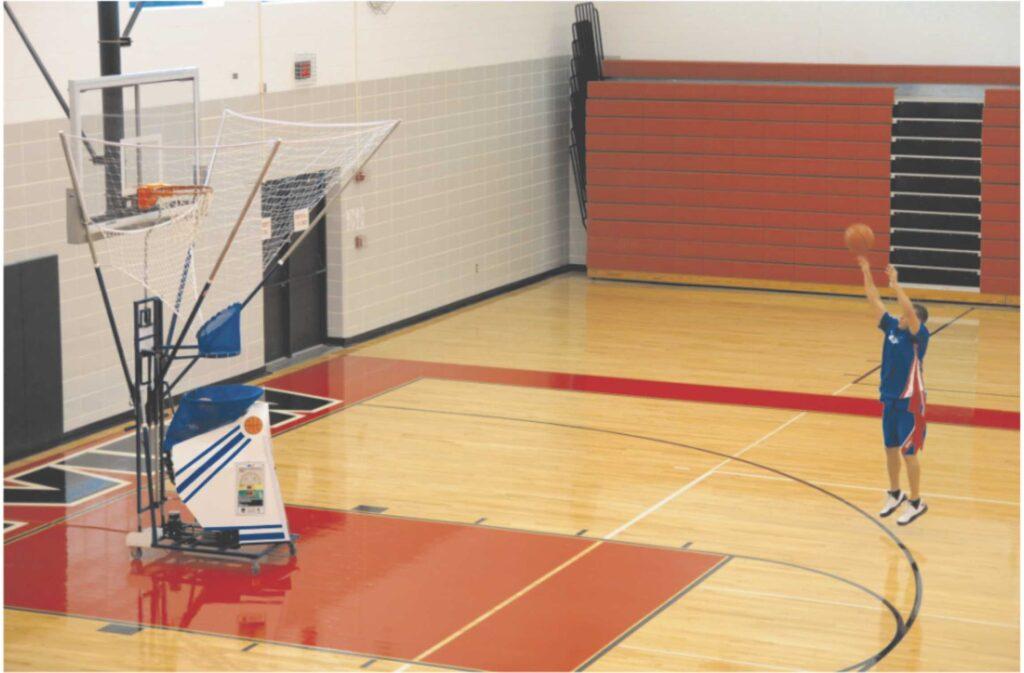Usually parked in one corner of the gym is a machine with a large net. This machine, called the the Gun 6000, has become a tool all the basketball teams are using to hone players’ shooting skills. The machine slightly resembles a tennis ball machine with a funnel made of netting planted on top.
When in use, it is positioned underneath a basketball hoop. It works this way: Players will arc basketballs over the lip of the net. Whether or not they go in the hoop, the balls funnel in the contraption where they eventually make their way to the front of the lineup and are shot out through a hole back to the shooter.
Though it is not nearly as dangerous as an actual gun, the machine’s constant spewing of basketballs can result in embarrassing accidents.
“I’m not naming names,” varsity girls’ basketball coach Danny Wallace said as he aimed a lighthearted glance at freshman varsity player Kaitlyn Yu, “but sometimes if they’re not focused, the ball comes and they freak out for a second.”
Yu has experienced this first hand.
“When I was shooting once I turned around and thought I was done, so I went to the shooting machine to turn it off and the ball shot out and almost hit my face,” Yu explained.
The Gun was developed by John Joseph. He dreamed up the idea for the contraption when he was an eighth grader attending basketball camp in the ‘80s. As soon as Joseph returned home, he decided to build his machine. The top-selling models, The Gun 6000, was put out in 1998 and The Gun 8000 debuted in 2009.
These two machines are electronic versions of the original invention created in 1984.
Wallace explained that the outer net of the machine extends about a foot higher than the inner hoop; this teaches players to give high arcs to their shots, which in turn can improve their accuracy.
In addition to forcing players to shoot in a more exaggerated arch, The Gun displays a miniature scoreboard, which presents the percentage of accuracy for a given session. The machine also has the ability to pass balls to any spot on the perimeter of the court, meaning that players do not have to retrieve their own rebounds and can practice shooting from anywhere up to half court. This, plus the ability to program intervals at which the machine releases balls, allows players to practice shooting on the move at intervals that allow anything from a dribble, to a pass then shoot scenario.
These technological advancements have allowed Wallace to expand his options in terms of coaching practice.
“It makes things so much easier. You can have your best player or any player work on their own without any coaching,” Wallace said.
Senior point guard Chloe Fung uses the contraption around once a week.
“It's good to shoot on the machine and then practice without it so it can translate into real game situations,” Fung said.
























